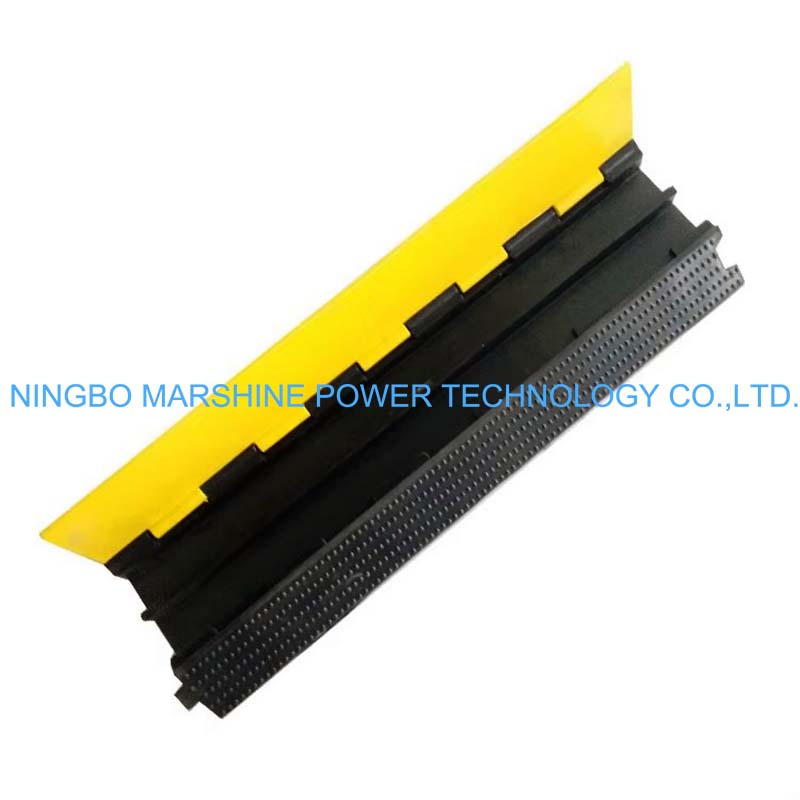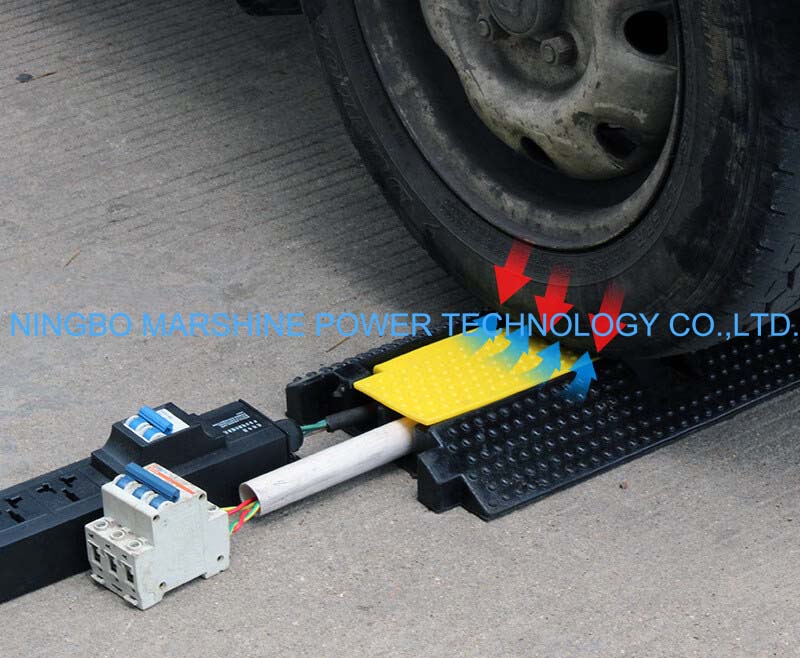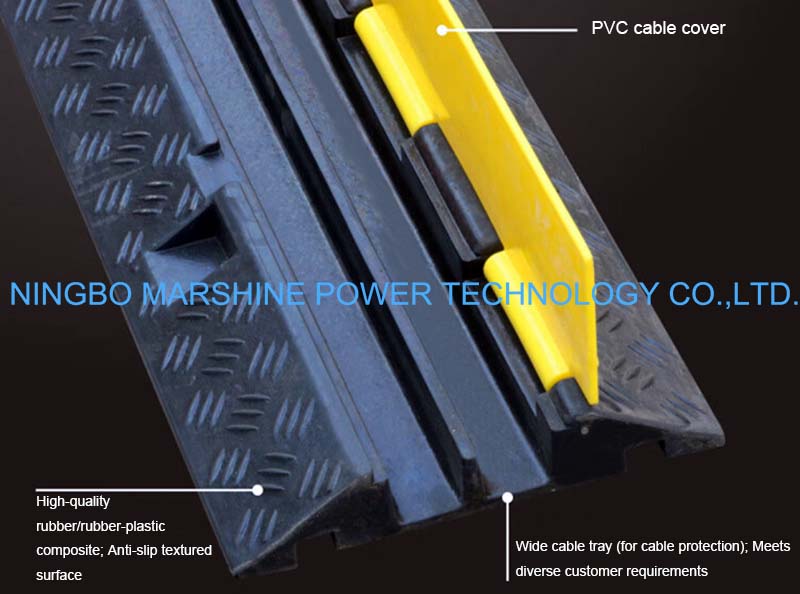Yes, Marshine cable protectors are safe when you use them as intended. They protect cables well and reduce tripping hazards. This post details the specific safety aspects that make Marshine cable protectors reliable. You will get clear answers here.

The materials used in cable protectors play a big role in their safety. Marshine makes its cable protectors from high-quality, non-toxic compounds. These materials do not release harmful chemicals into the air. This is especially important for indoor use or in places with poor ventilation.
Many standards confirm the non-toxic properties of these materials. For example, Marshine cable protector materials often meet strict international safety guidelines:
UL Solutions also offers special certifications for wire and cable products. These include Halogen Free (HF) and Low Smoke Halogen Free (LSHF) marks. These certifications follow the IEC 62821 series of standards. LSHF certification means the material produces little smoke when it burns and contains very few halogen elements like Chlorine or Bromine. These certifications show Marshine's commitment to using safe, non-toxic materials.
A safe cable protector must also be tough. Marshine designs its cable protectors to withstand a lot of wear and tear. They resist damage from constant foot traffic and even light vehicle crossings. The materials also stand up well to different environmental conditions. They do not break down easily from UV radiation, which comes from sunlight. They also handle extreme temperatures, both hot and cold, without becoming brittle or soft. This means the protectors keep their shape and protective qualities over time. They also resist common chemicals, oils, and solvents. This durability ensures the protector remains effective for a long time, keeping your cables safe and preventing new hazards from a broken protector.
Marshine cable protectors are not just tough; they also handle heavy loads. Their design and material choices give them a high weight capacity. This means vehicles can drive over them without crushing the cables inside or damaging the protector itself. Imagine a forklift or a car driving over the protector. It stays intact, and the cables underneath remain protected. This high weight capacity is crucial in industrial settings, warehouses, or even driveways where heavy objects might cross the cables. It prevents costly cable damage and avoids creating tripping hazards from a collapsed protector.
Electrical safety is a top concern for any cable management solution. Marshine cable protectors excel in this area. They use materials with excellent electrical insulation properties. This means the protector acts as a barrier. It stops electricity from escaping the cables and reaching people or other conductive surfaces. This insulation is vital for preventing electrical shocks.
Imagine a damaged cable inside the protector. The protector's insulating material keeps you safe from direct contact with live wires. It significantly reduces the risk of electrocution. These materials often have a high dielectric strength. This term describes how well a material resists electrical breakdown. A higher dielectric strength means better insulation.
Many Marshine cable protector products meet strict electrical safety standards. For example, some materials might comply with:
These certifications confirm the materials effectively isolate electrical currents. They give you peace of mind knowing the protector adds an extra layer of safety.
Fire safety is another critical aspect of cable protection. Cables can sometimes overheat or short-circuit, leading to fires. Marshine cable protectors are designed to resist fire. They use materials that are either flame-retardant or self-extinguishing. This means they do not easily catch fire. If they do, they will stop burning quickly once you remove the flame source. This feature helps prevent fires from spreading.
Manufacturers test these materials against various flammability standards. Here are some common ones:
| Standard | Description | Safety Benefit |
|---|---|---|
| UL94 V-0 | Material self-extinguishes within 10 seconds, no flaming drips. | High fire safety, prevents fire spread and secondary ignitions. |
| UL94 V-1 | Material self-extinguishes within 30 seconds, no flaming drips. | Good fire safety, reduces fire risk. |
| IEC 60332-1 | Tests a single insulated wire or cable for flame spread. | Ensures individual cables resist flame propagation. |
| IEC 60332-3 | Tests a vertical bundle of wires or cables for flame spread. | Crucial for preventing fire spread in cable trays or bundles. |
When a cable protector meets standards like UL94 V-0, it means the material has excellent fire-resistant properties. It will not contribute to a fire. Instead, it helps contain it or prevent it from starting. This is especially important in public spaces, offices, or industrial environments where many cables are present.
Exposed wiring creates many dangers. It can lead to electrical shocks, short circuits, and even fires. It also presents a significant tripping hazard. Marshine cable protectors solve these problems by completely enclosing the cables. They create a protective tunnel for your wires.
This enclosure does several things:
By keeping wires safely tucked away, the protector removes the direct risk of touching damaged insulation. It also prevents accidental damage from foot traffic or equipment. This simple act of containment significantly boosts overall safety. It ensures your electrical setup remains secure and hazard-free.

Marshine cable protectors significantly reduce trip hazards. Their thoughtful design creates a smooth transition over cables. This prevents people from catching their feet. The protectors also keep cables neatly organized within channels. This eliminates loose wires that can cause falls. Many designs feature:
These design elements work together. They make walkways safer and prevent accidents.
Choosing the correct size for a Marshine cable protector is crucial. You must match the protector's channel capacity to the number and diameter of your cables. An oversized protector can still create a trip hazard if it is too wide for the area. An undersized one will not fit all cables. This leaves some exposed. This creates new dangers. Proper sizing ensures all cables fit snugly. It also maintains a low profile. Always measure your cables and the intended path. This guarantees the best fit and maximum safety.
Secure placement is vital for safety. You should firmly attach the Marshine cable protector to the floor. This prevents it from shifting or sliding. Use adhesive or screws as recommended by the manufacturer. Regular maintenance also ensures ongoing safety. Check the protector for wear, cracks, or damage. Replace any damaged sections promptly. Keep the surface clean. This prevents dirt or debris from becoming a slip hazard. A well-maintained and securely placed protector continues to protect cables and prevent trips effectively.
Marshine cable protectors offer a safe, effective solution for managing and protecting cables. They significantly reduce electrical and tripping hazards when people properly select, install, and maintain them. Their design and material choices prioritize user safety. This makes a Marshine cable protector a reliable choice for both home and professional environments.
Yes, many Marshine cable protectors handle outdoor conditions. They resist UV rays and extreme temperatures. Always check product specifications for outdoor ratings.
Clean them with mild soap and water. Avoid harsh chemicals. Regular cleaning helps maintain their non-slip surface and appearance.
Yes, many Marshine protectors have high weight capacities. They protect cables from cars and forklifts. Always check the specific model's load rating.

